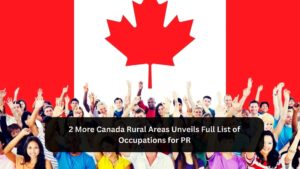Misplacing, expiring or having your Permanent Resident (PR) card held up abroad can leave even seasoned travellers feeling stranded. Fortunately, Canadian law guarantees permanent residents the right to return, provided they can prove their status. Below are five practical strategies to help you cross the border without a valid PR card in hand.
1. Cross at a Land Port by Car
One of the most reliable workarounds is driving into Canada from the United States:
- Choose a Nearby US Hub: Major airports in Buffalo (NY), Detroit (MI) or Seattle (WA) offer frequent flights and are within easy reach of Canadian land crossings.
- Use a Private Vehicle: Rent or borrow a car, truck or motorcycle—public buses and shuttles often face stricter document checks.
- Bring Backup ID: In addition to your passport, carry your Confirmation of Permanent Residence (CoPR), provincial health card, driver’s licence and a utility bill showing your Canadian address.
- Stay Calm and Clear: Border officers will verify your identity and PR status. Explain your situation honestly—lost, stolen or expired card—and present all documentation clearly. Officers must admit permanent residents once status is confirmed, though you may face additional questioning.
2. Book an Airport Layover in Canada
If you must fly, consider a connecting flight that lands in Canada:
- Plan a Short Stopover: Choose an itinerary that touches down at a Canadian airport before continuing abroad.
- Disembark During Your Layover: Once you’re on Canadian soil, you can request entry as a permanent resident.
- Weigh the Risks: Airlines sometimes refuse boarding without a PR card or Permanent Resident Travel Document (PRTD), and coordinating the layover can be tricky—this is a last-resort option.
3. Lean on Your US Citizenship (If Applicable)
Dual-status travellers have a distinct advantage:
- Use Your US Passport: Permanent residents who also hold US citizenship can cross into Canada by air, land or sea with minimal fuss.
- Keep Your CoPR Handy: Carry proof of your Canadian PR in case officers ask for confirmation.
- Enjoy Seamless Passage: No PRTD or land-border detour needed—you’ll clear immigration just like any other US citizen.
4. Remember: Expired Card ≠ Lost Status
An out-of-date PR card may prevent you from boarding commercial carriers, but it doesn’t cancel your status:
- Know Your Rights: Even if your card has expired, Canadian officials cannot strip you of your permanent residency.
- Avoid Panicking: Don’t assume you’re stuck—other solutions are available to get you home.
- Prepare for Alternatives: If you can’t board a plane, revert to the land-border method or apply for a PRTD.
5. Apply for a Permanent Resident Travel Document (PRTD)
When all else fails, the PRTD is the official tool for re-entry:
- Submit from Abroad: You must apply at a Visa Application Centre or Canadian embassy/consulate outside Canada.
- Provide Key Documents: Include your valid passport, CoPR, proof of residency (utility bills or lease), and a police report if your card was lost or stolen.
- Pay the Fee: A CAD 50 processing charge applies, plus any service fees at the VAC.
- Wait Patiently: Turnaround can range from two weeks to six months, depending on location and workload.
- Use Your Single-Entry Document: Once approved, the PRTD stamp in your passport grants you one return trip to Canada.
When Residency Requirements Haven’t Been Met
If you’ve spent more than 60 months outside Canada in the past 10 years without meeting the 730-day residency obligation, your PRTD application may require a Humanitarian and Compassionate submission. Explain circumstances—such as work, family emergencies or medical needs—that kept you abroad. Strong documentation and, sometimes, legal advice will strengthen your case.
Tips to Streamline Your Return
- Over-Prepare Your File: Bring extra proofs of residence and identity to border crossings or PRTD interviews.
- Stay Proactive: Track your PRTD application online and follow up persistently if delays occur.
- Seek Help if Needed: Immigration consultants or your local MP can sometimes expedite urgent cases.
- Keep Permits Current: Until your PR status is back in hand, maintain valid visitor or work authorization where possible.
While the journey can be stressful, these five routes ensure permanent residents aren’t left behind. With careful planning, honesty at the border and a backup strategy, you’ll be back on Canadian soil—and back to normal—sooner than you think.







